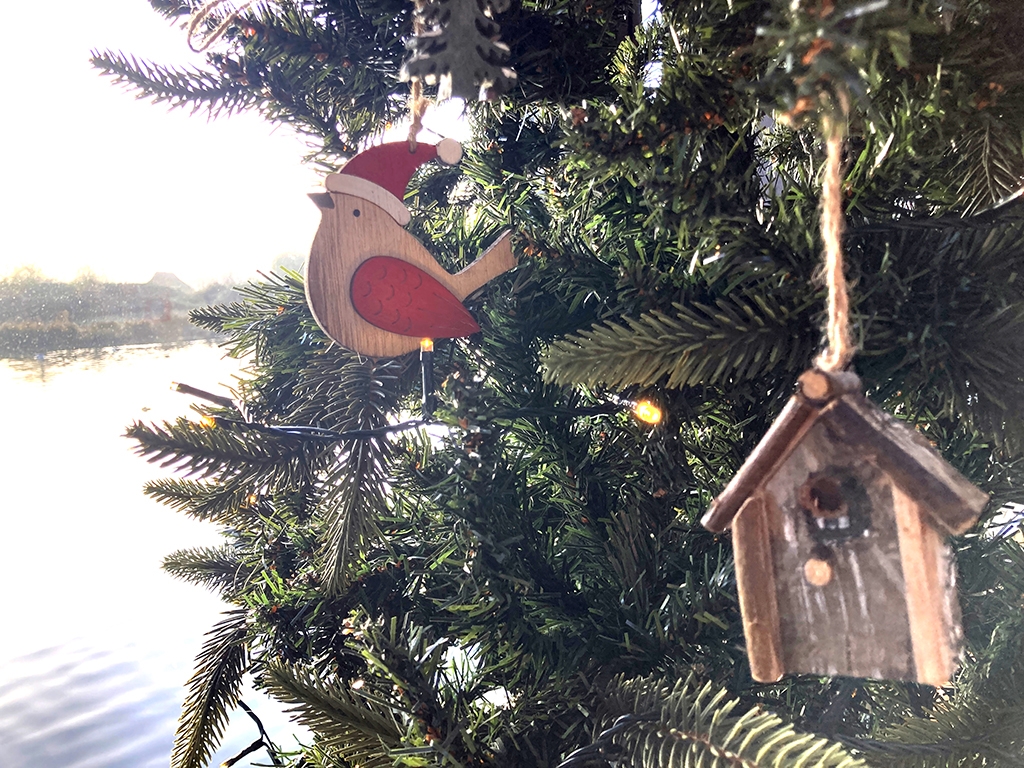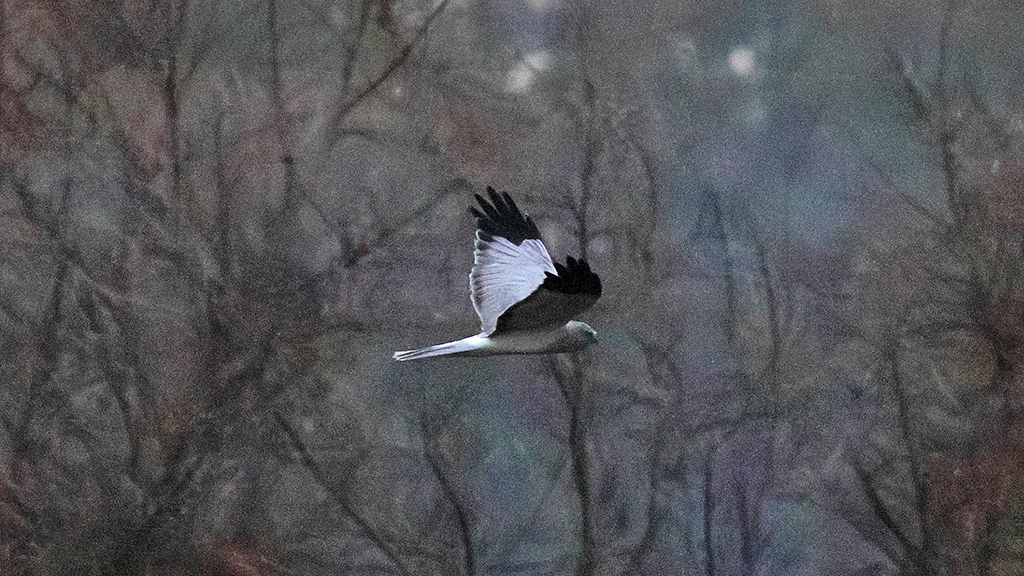Who's new at Arundel this season

From May through September the Keepers at Arundel were busy with the hatching, feeding and fledging of new cygnets, goslings and ducklings among the collection birds at Arundel Wetland Centre.
Many birds nest in exhibits in boxes built by the Keepers. Eggs of birds in special programs are collected and hatched in incubators for maximum chance of survival. These are hand-reared by the Keepers in tanks and then moved into our outdoor duckery. The rest youngsters that hatch on the nest in our exhibits are moved into the duckery with their families and raised by their parents.
Endangered scaly-sided mergansers
On May 2 this spring the first egg of the 2022 breeding season hatched - a female scaly-sided merganser we named Padme. The second egg that hatched was also a 'scaly', another female dubbed Obi. The sisters are pictured above in May, under the red glow of the heat lamp in the rearing tank.
Scaly-sided mergansers are classified as endangered so the pair were hand-reared by our keepers as part of a European breeding programme. Scaly sided mergansers are originally from China and Russia where populations have been declining fast because of illegal hunting, birds drowning in fishing nets and habitat lost to dam construction. The Wildfowl & Wetlands Trust has been working to help this globally endangered bird since 2002. Breeding these ducks in captivity is a major part of conservation efforts for this species.
Currently you can see these young scaly-sided mergansers with their parents in our Coastal Creek walk-through aviary.
A bounty of black-necked grebes

This black-necked grebe chick was one of seven that hatched at Arundel this season.
Seven black-necked grebes chicks hatched at Arundel Wetland Centre between May 29 through July 4 this year. The oldest chick named Pumpkin hatched on May 29th and the last, known as Pea, hatched on July 4th.
Black-necked grebes are difficult to breed in captivity and Arundel Wetland Centre is the only attraction breeding them in the UK and in all of Europe. Our Keepers were very dedicated, on a schedule of feeding the chicks six times at day along with their other duties.
Sam McKinlay Head Keeper at Arundel Wetland Centre said:
“Our success with these lovely birds is down to the quality of naturally chalk-filtered water onsite, the moving water in the exhibit and our team’s careful monitoring of the birds and their eggs.”
The juvenile grebes are all now out on exhibit in the Waterfall pen.
Beautiful Bewick’s swans
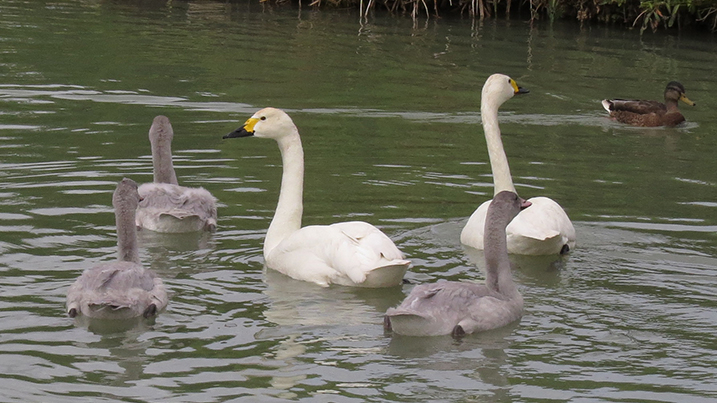
The Bewick's family back on their exhibit
Our pair of Bewick's swans built a large nest in their exhibit and were sitting on four eggs by May 11th. After three cygnets hatched on June 4 our Keepers moved the family into our duckery to give the young birds extra protection. The fourth egg had an abnormally thick shell - it's hatching was hand assisted by Head Keeper Sam McKinlay. The fourth swan was hand reared and now is living in the duckery in the company of two juvenile swan geese who hatched in June.
The adult pair of Bewick's and the other three juvenile swans are back on their home pond beside the Icelandic Lake pen. The adult female has the metal leg ring, while the dad’s leg ring is orange.
June's newcomers
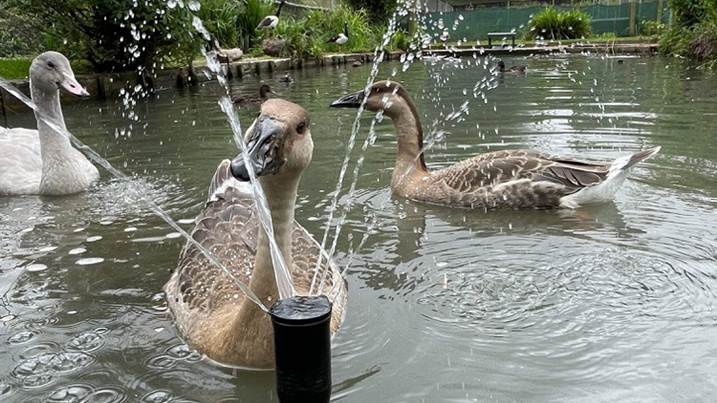
In June our team oversaw the hatching of three 3 harlequin ducks who are now grown and living with their flock in the Coastal Creek aviary. Two male buffleheads and three females hatched with some destined for WWT London when they are able to travel. We had hatches among the common golden eye ducks and Carolina wood ducks. The were four Meller’s ducklings, five red shoveler ducklings and some Baikal teal ducklings that were all hand reared by staff. Our Orinco geese had five goslings and the swan geese had four goslings.
Philippine Ducklings
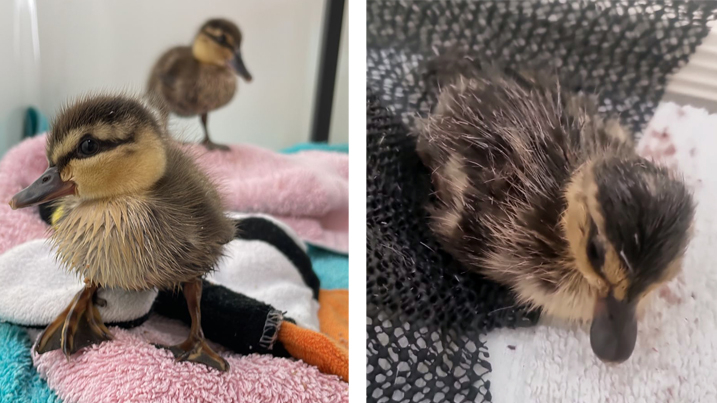
Nugget and Moose in the wet rearing tank and Chip's first day in the hatcher crate
Moose (back) was our first Philippine duckling to hatch this season on July 20 while sibling Nugget (foreground) hatched on July 27. Chip, our newest Philippine duckling hatched out on August 9. Chip is pictured in a hatcher crate on his very first day while Nugget and Moose (at the back) are shown in the wet rearing tank. Moose and Nugget are now old enough to be in their own pen in the outdoor duckery where Chip will eventually join them. All the Philippine ducks hatching at Arundel this season will be moving onto WWT Washington Wetland Centre when they are older and can travel in 2023.
The little ducklings with a very big name
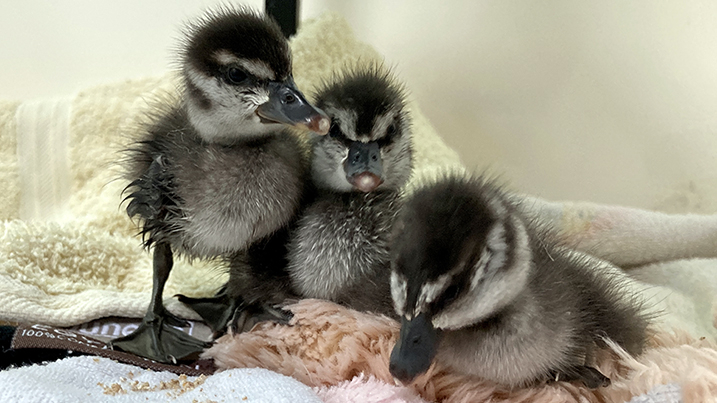
Three of the eleven East Indian wandering whistling ducks that hatched this August
In August we had eleven East Indian wandering whistling ducklings hatch. Four hatched on August 16 and seven on August 26 and were raised in the rearing tank in the Collection Teams office. These birds are one of the species in our WWT breeding programme and some are earmarked to move to WWT London when they have grown.
Reedswamp reopens
The project to revitalize our Reedswamp exhibit finished early in the summer but it was difficult to grow and grass in the exhibit during the August heatwave. The exhibit reopened last week with reintroduction of the white-headed ducks back to their home pond joined by newcomers – a flock of Baer’s pochard, some Javan ducks and a pair of Patagonian crested ducks. Geese will be reintroduced when there is enough grass for them to graze. The ducks here are free roaming so the gates are back in place on the pathways.
See who's new
If you've want to see our new collection birds this autumn, plan your visit online.
Plan your visit